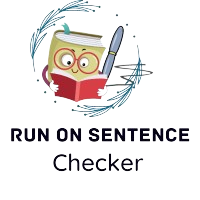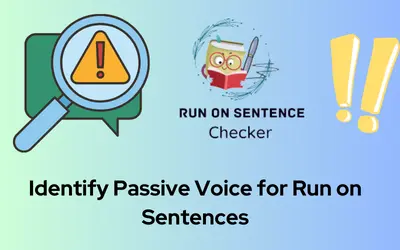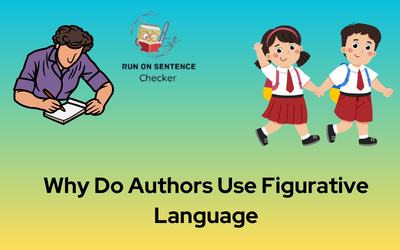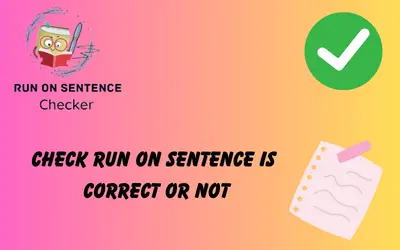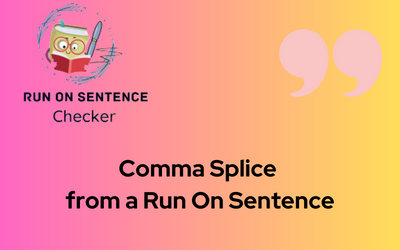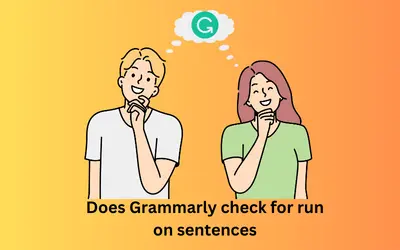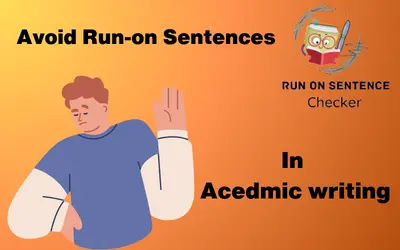
With our advice on how to avoid run-on sentences in academic writing, you may discover the keys to flawless academic writing. Develop your abilities and succeed academically with knowing that am I writing correct sentences with run on sentence checker tool.
Proficiency in academic writing demands more than simply a strong vocabulary and thoroughly researched topic. It calls on the ability to formulate succinct, unambiguous phrases.
We explore the subtleties of avoiding run-on sentences in academic writing in this in-depth tutorial, so that your work stands out for all the right reasons.
Mini Examples: I first became interested in biology when I was 10; therefore, I want to be a biologist at a research university
How to Avoid Run-on Sentences in Academic Writing
It’s critical to improve your writing abilities when it comes to academic writing. Writing concise, powerful phrases can enable you to express your thoughts effectively and create a report that is more compelling. You may also utilize a strong writing aid programmed like Trinka. It is an AI-powered tool designed to support writers in producing quality academic writing. Trinka immediately draws attention to any ambiguity or vagueness in the text and offers suggestions for how to make it more gender-neutral, succinct, clear, and cohesive. Moreover, it offers unique capabilities to refine your writing and prepare it for a worldwide readership.
Understanding run-on sentences is the first step towards navigating the intricacies of academic writing. These happen when two or more separate clauses are connected incorrectly, which ruins the writing’s flow and readability.
The Role of Sentence Structure in Run-on
In order to write How to Avoid Run-on Sentences in Academic Writing that is clear and succinct, sentences must be well-crafted. Develop your capacity to communicate difficult concepts simply to improve the work’s readability as a whole.
Monotony in sentence length can lead to run-on sentences is correct or not. Discover the impact of incorporating varied sentence lengths to maintain reader engagement and eliminate the risk of run-on sentences.
Run On Sentences Vs Long Sentences
Run On Sentences
Run-on sentences occur when two or more independent clauses are joined without proper punctuation or conjunctions. They often result in confusion, disrupting the flow of ideas.
Example: Incorrect: The sun was setting, it painted the sky in hues of orange and pink it was a breathtaking sight.
In this example, the lack of comma splice or conjunctions between the clauses creates a run-on sentence.
Long Sentences
Long sentences, on the other hand, are deliberate constructions that extend over a considerable length. When carefully crafted, they enrich writing by providing detailed and interconnected ideas without sacrificing clarity.
Example: Correct: As the sun dipped below the horizon, painting the sky in hues of orange and pink, casting a warm glow over the landscape, I marveled at the breathtaking sight.
This example demonstrates a long sentence where the ideas flow cohesively, enhancing the descriptive nature of the writing.
Examples of Run on Sentences
Example 1: Run-On Sentence
Incorrect: She loved hiking it was her favorite way to spend weekends outdoors.
In this instance, the absence of proper punctuation or a conjunction between “hiking” and “it” results in a run-on sentence. It combines two independent clauses without adequate separation.
Example 2: Long Sentence
Correct: She loved hiking, a pursuit that allowed her to connect with nature and rejuvenate her spirit, making it her favorite way to spend weekends outdoors.
In this example, the sentence is long, but it remains structurally sound, providing additional details without creating confusion. The ideas are connected seamlessly, avoiding the pitfalls of a run-on sentence.
Conclusion
In essence, the key distinction lies in proper sentence construction. Run-on sentences lack the necessary punctuation or conjunctions, causing confusion, while long sentences for How to Avoid Run-on Sentences in Academic Writing, when well-crafted, contribute to the richness of writing without sacrificing clarity. Mastering this difference enhances your ability to convey ideas effectively in your writing.
How do you teach avoiding run-on sentences?
When using punctuation correctly, you may prevent writing in run-on sentences. This involves joining similar ideas together with conjunctions, separating things in a list with commas, and ending and beginning ideas with periods.
What are the correct ways to fix run-on sentences?
Separate the Clauses into Two Sentences:
Divide the clauses by inserting a period between them.
Use a Semicolon for Closely Related Clauses:
Insert a semicolon between the clauses if they are closely related.
Utilize a Comma with a Coordinating Conjunction:
Use a comma along with a coordinating conjunction to separate the clauses.
What are 3 types of run-on sentences?
A run-on sentence occurs when two or more independent clauses are not joined together properly. An independent clause contains a subject and a verb and expresses a complete thought. Three types of run-on sentences are fused sentence, comma splice, and polysyndeton.
What is the correct sentence structure?
A sentence follows Subject + Verb + Object word order. He (subject) obtained (verb) his degree
